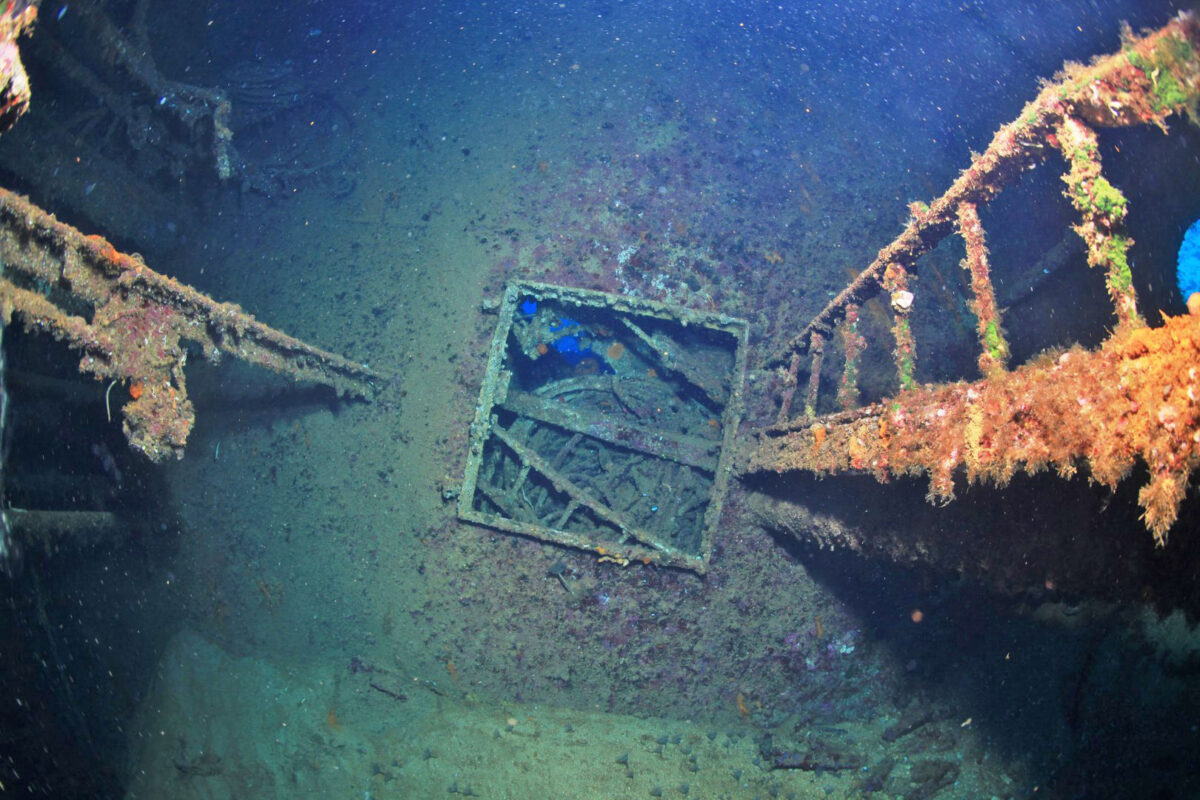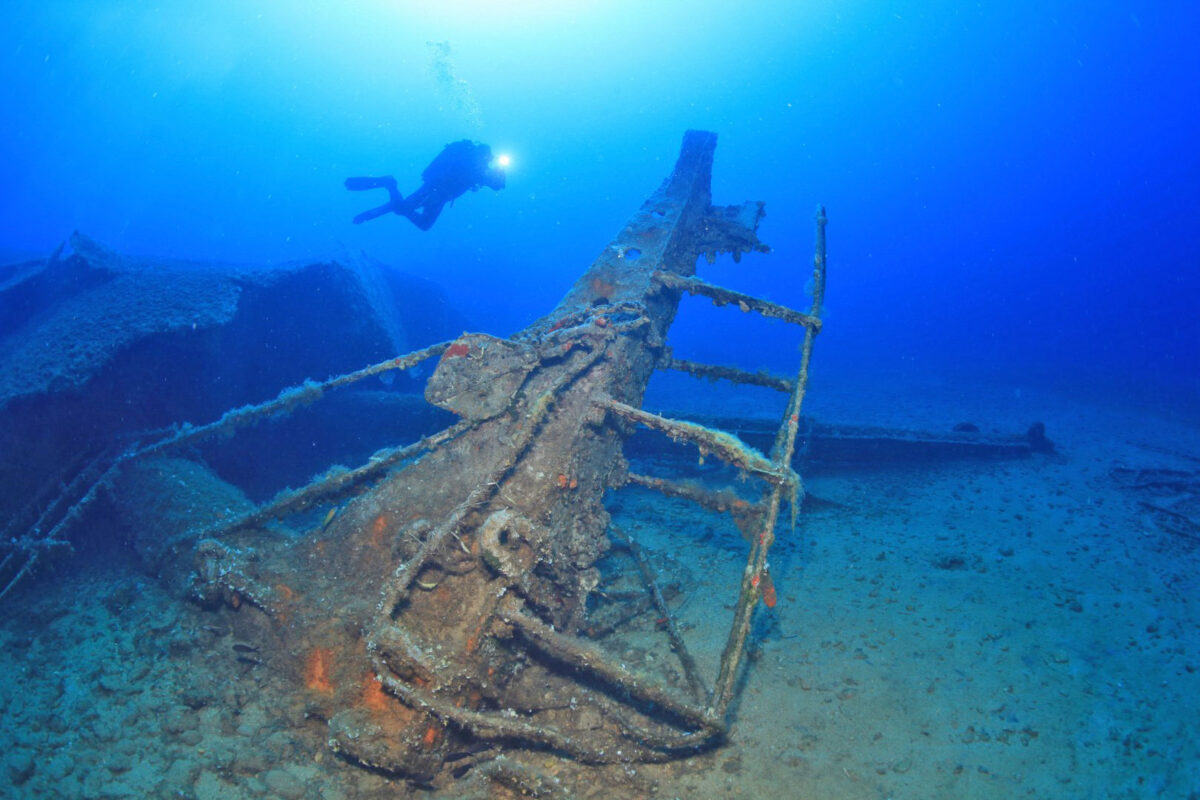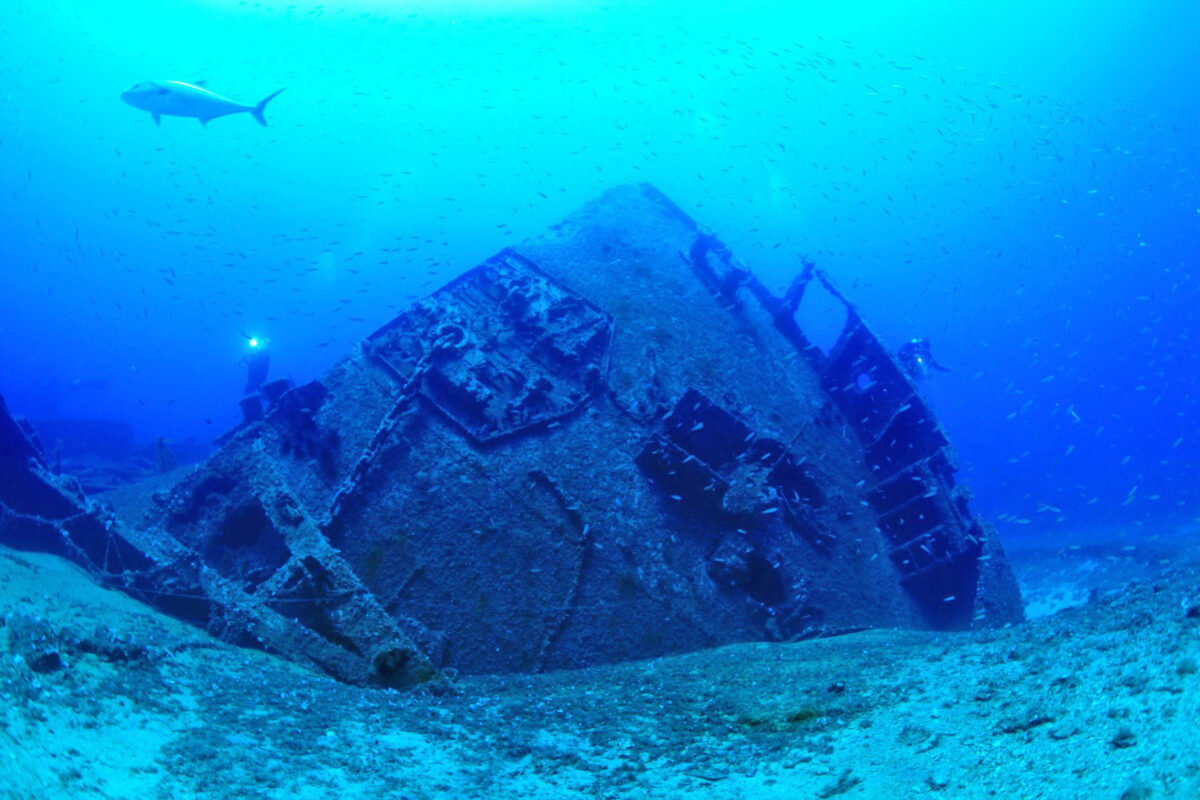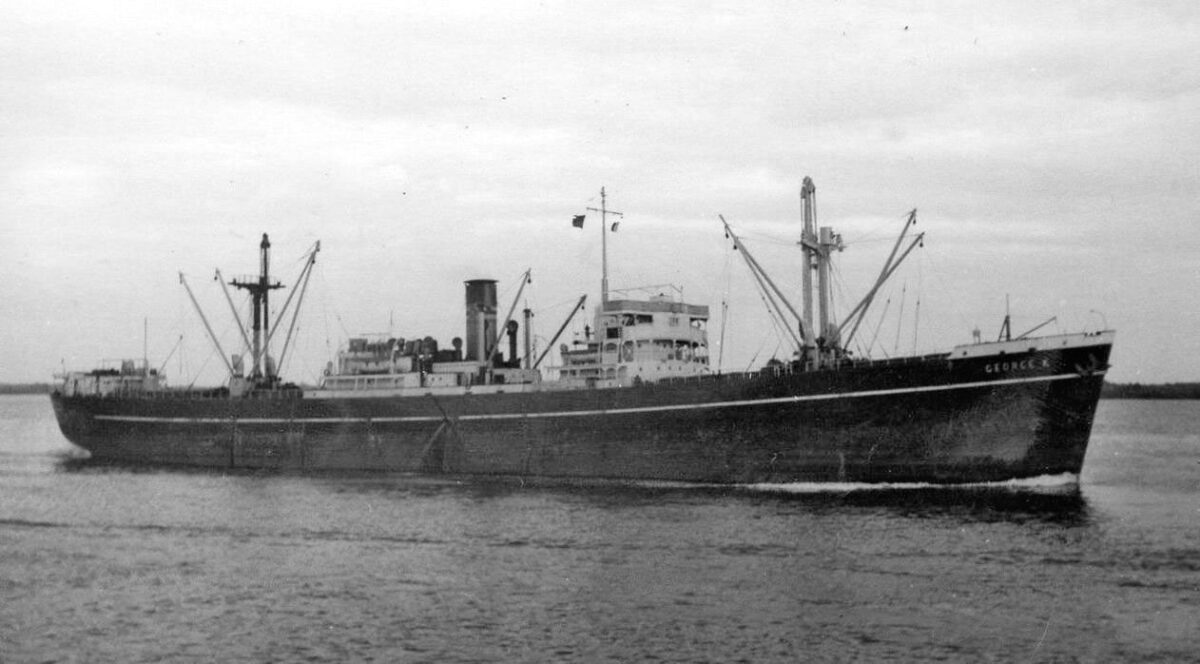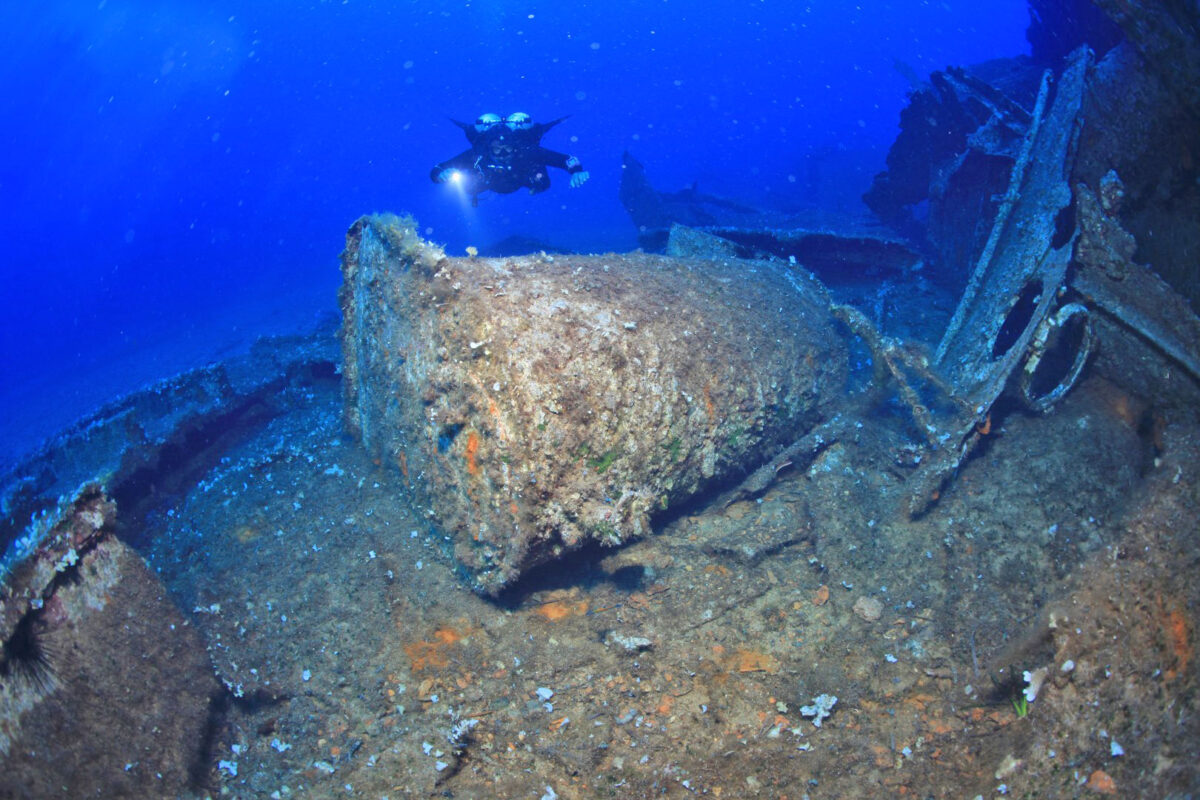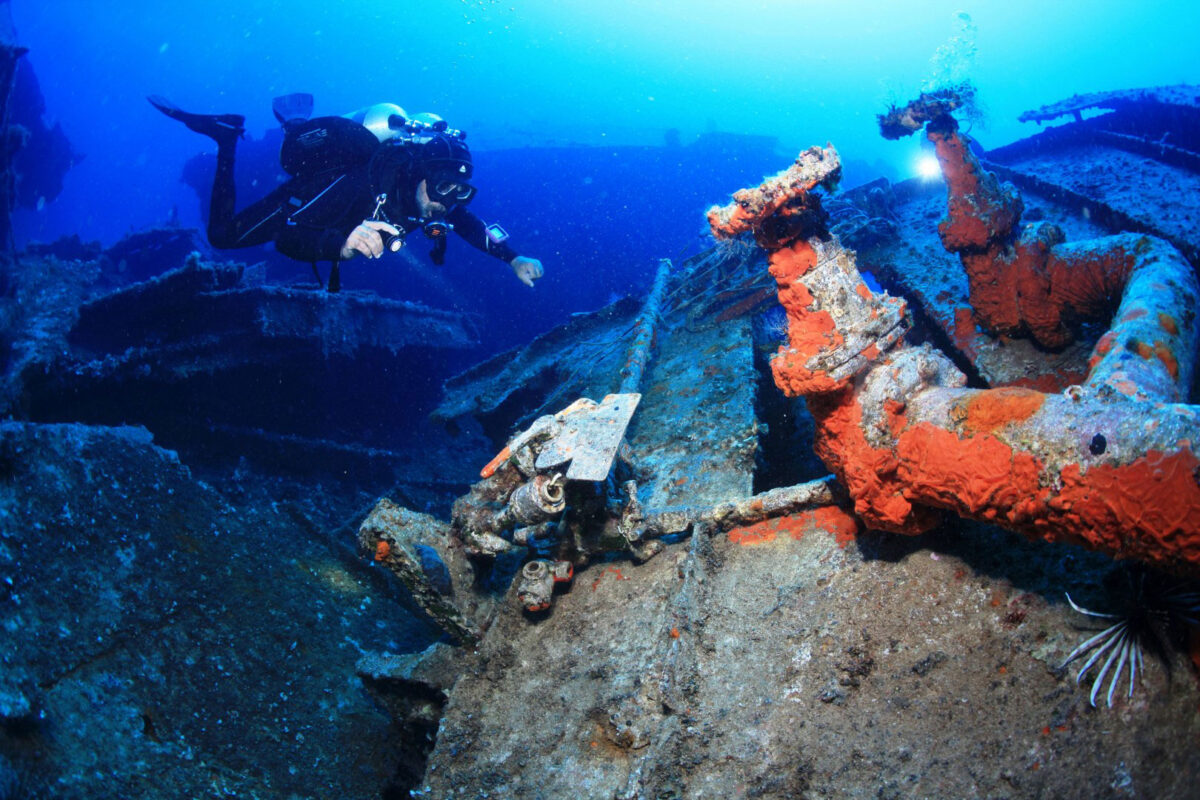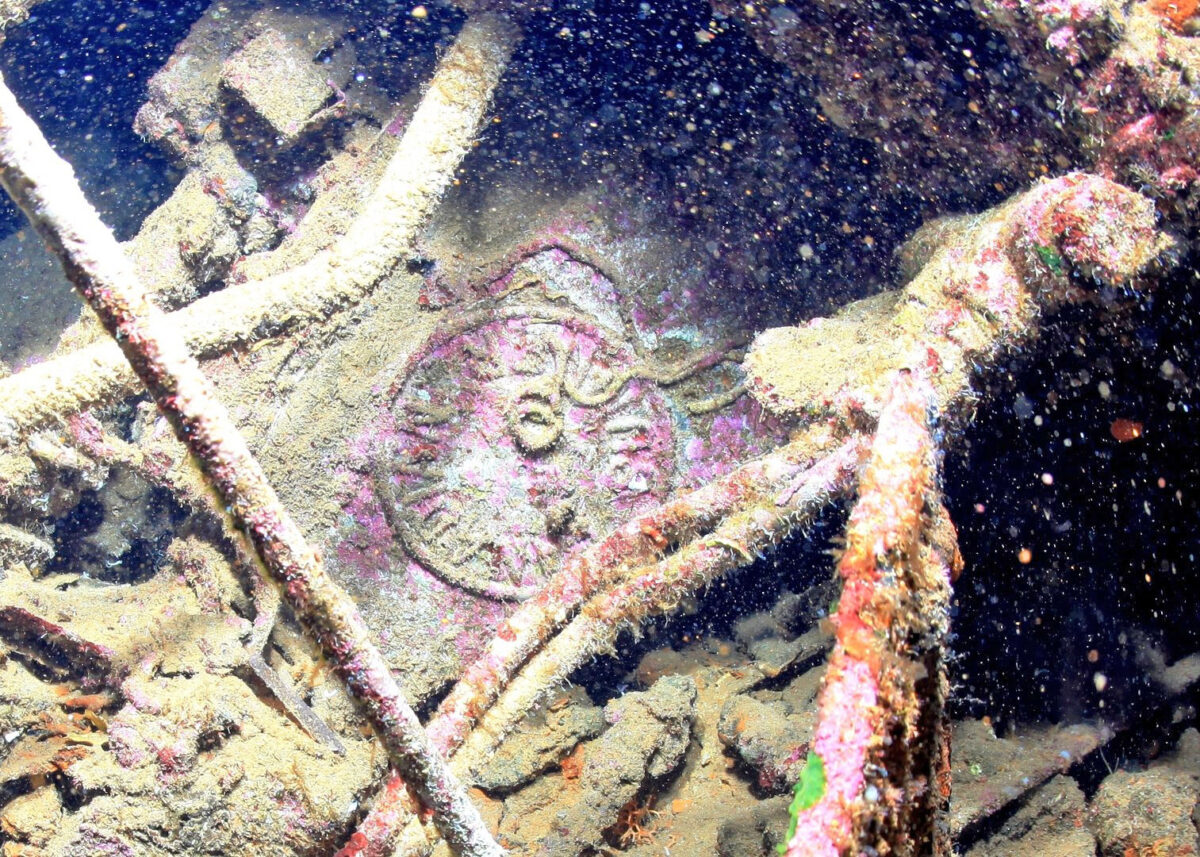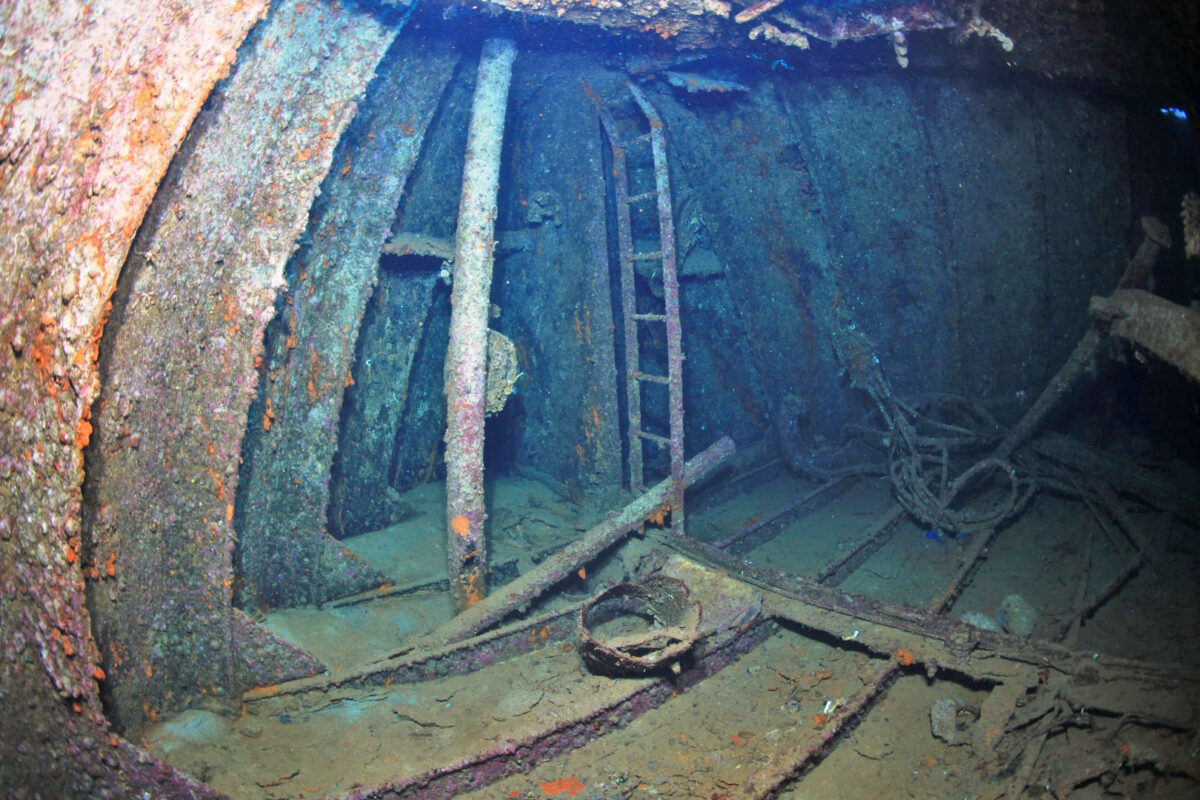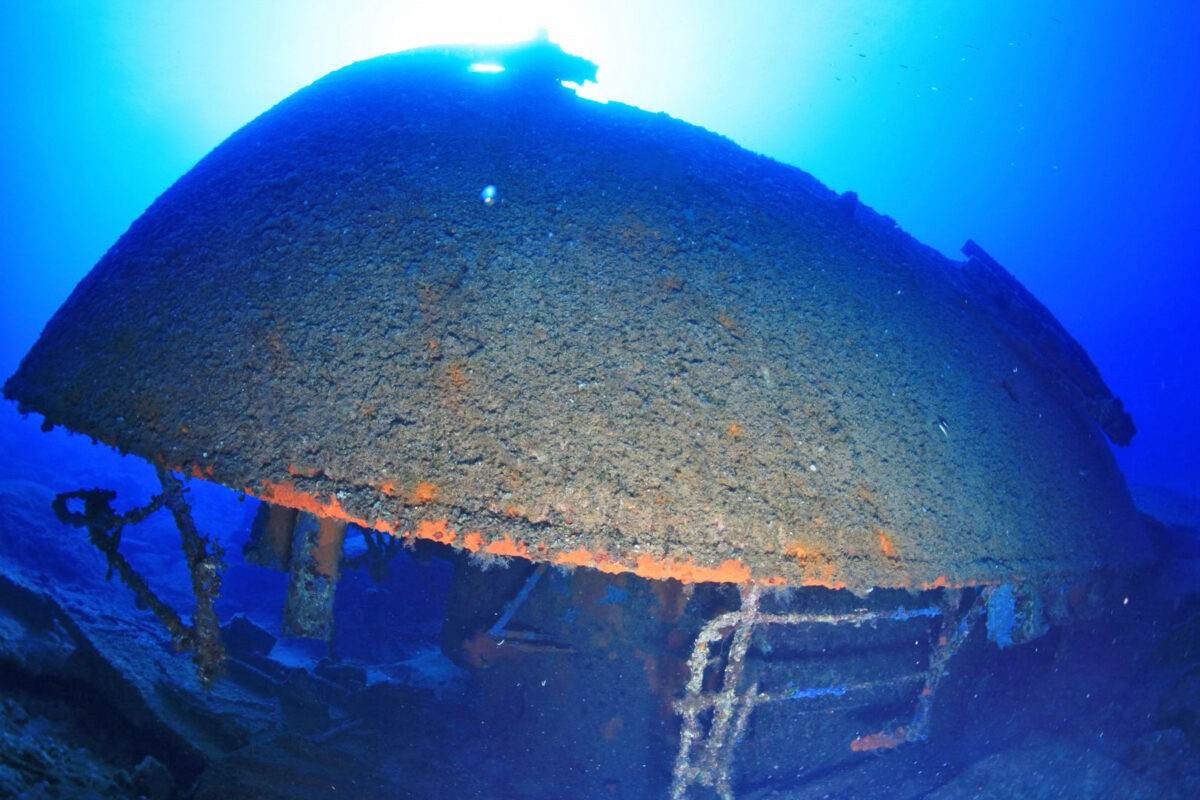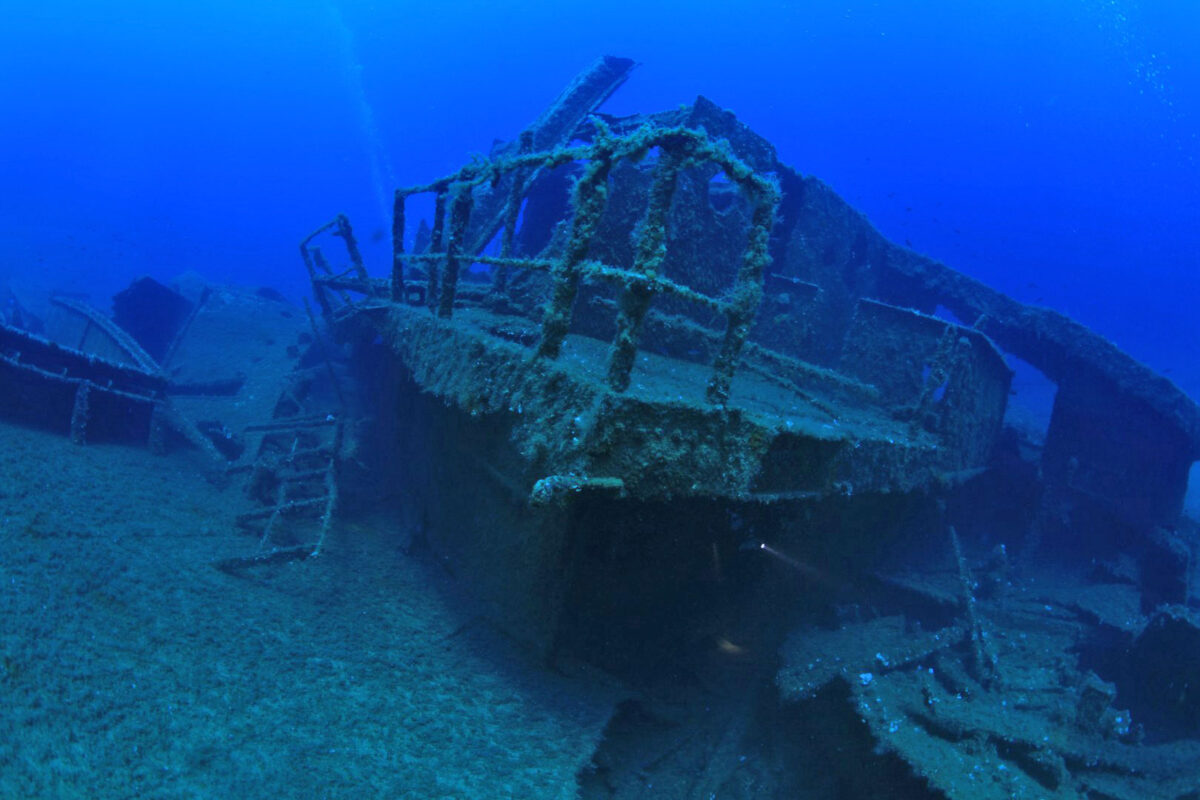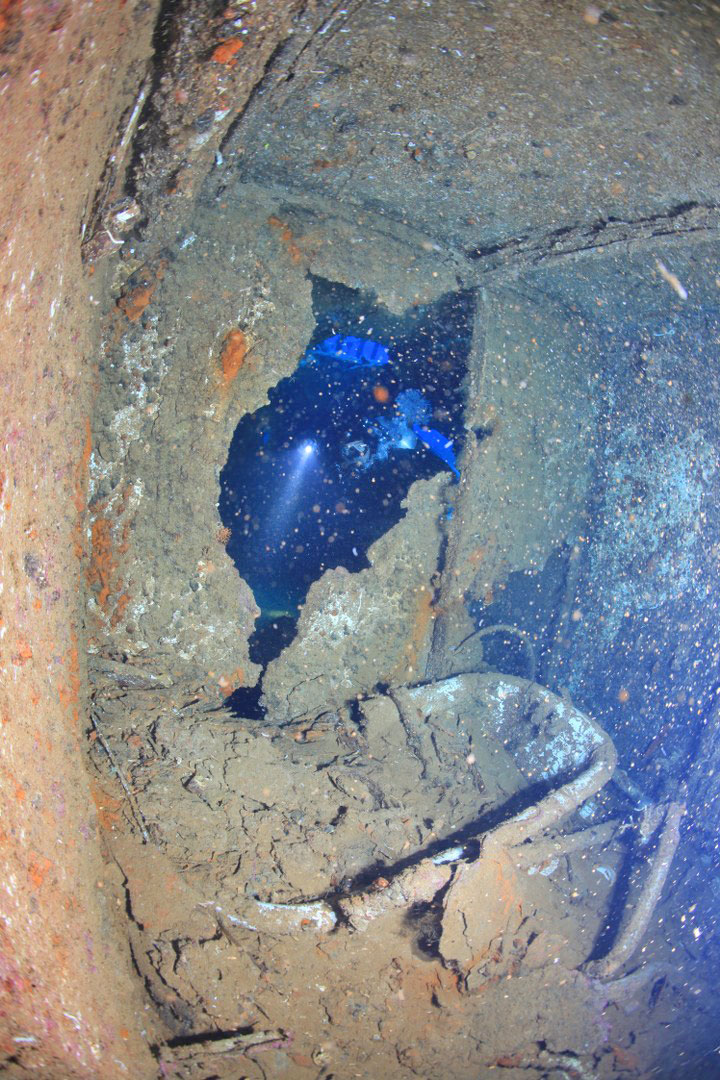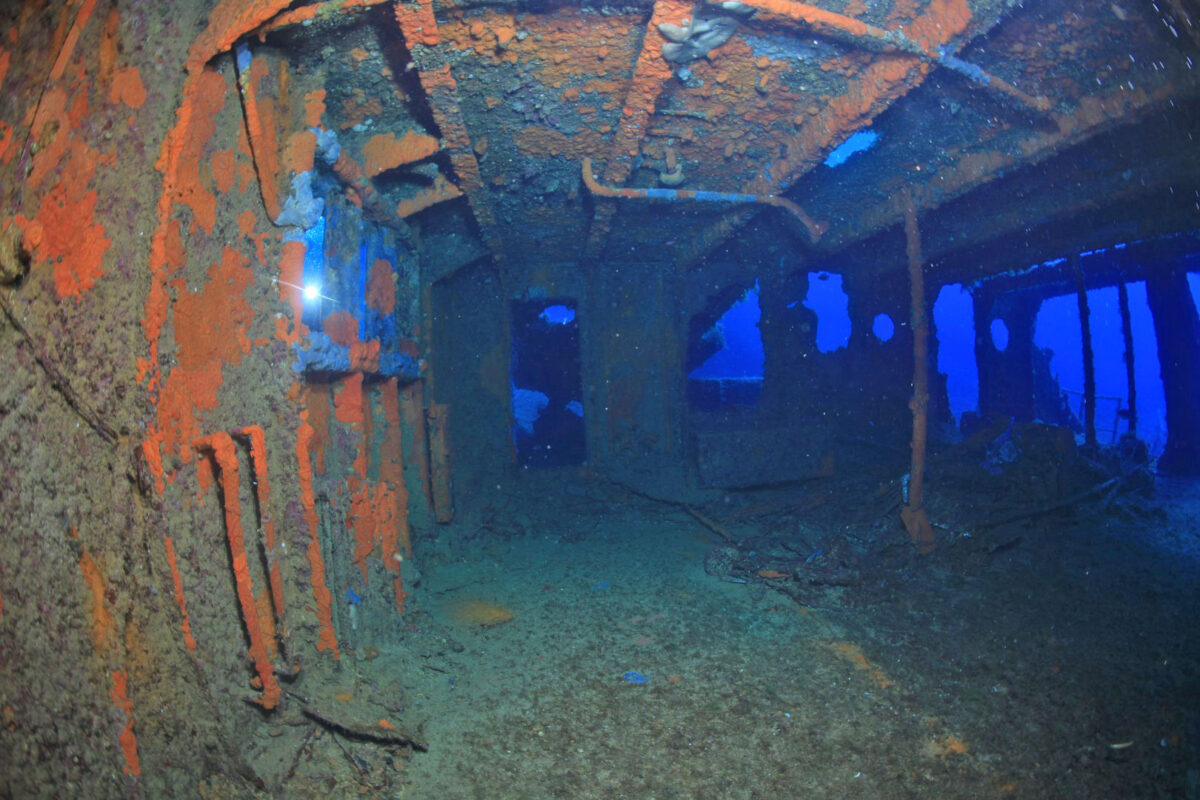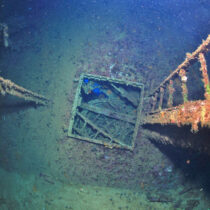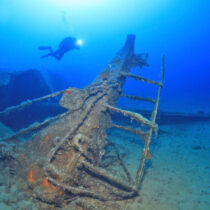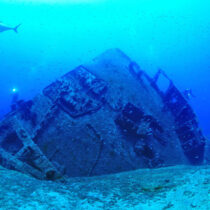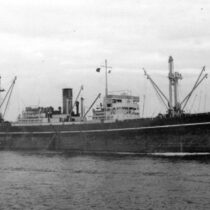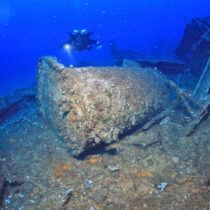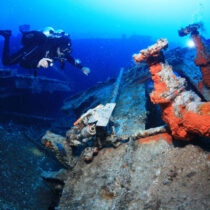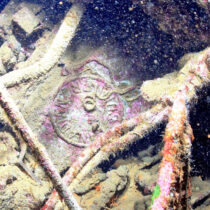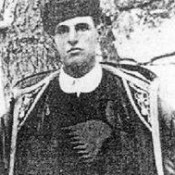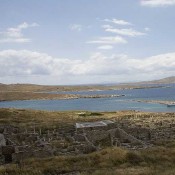Research has shed light on one of the most important shipwrecks at the bottom of the Aegean, with the “identification of the AFRICAN MARQUIS” an extremely rare “Canadian liberty”, lying since 1958 in the waters off the islet of Plati, in the southwest Dodecanese.
As the researcher Kostas Thoktaridis says, this is a shipwreck of inestimable value as none of the 356 ships of this type that were built in Canada during the war have survived. “The Liberty, Canadian or American, essentially decided the outcome of the battle for the food supply of Great Britain by sea,” he adds.
In World War II
If one were to pick up the threads of history, one would begin with the fact that heavy merchant shipping losses caused by German U-boats had tipped the scales in favour of the Axis, jeopardizing the outcome of the Battle of the Atlantic. So in 1940 the British government proceeded to build cargo ships of a type based on the pre-war “North Sands” design. This was chosen for its simplicity, economy and also for its large cargo capacity, allowing a load of 10,000 tonnes to be transported. Using the “North Sands” shipbuilding design, 204 merchant ships were built in Canada for the British Ministry of War Transport, given names with the prefix “Fort”, as well as 21 fleet auxiliaries. An additional 135 ships of the same type were built on behalf of the Canadian government and given names with “Park” as a prefix .
The “North Sands” design was then used by the USA in an improved form for the needs of their own shipbuilding programme. A total of 2,710 ships of the EC2-S-C1 type were completed and became known as Liberty. In appearance, their main difference was in the layout of the accommodation which was in a single structure, while on the Canadian and Ocean ships an additional hold separated the bridge from the rest of the accommodation
The Liberty Ships in Greece
Of the Canadian-built ships of the Fort and Park type, thirty-one were lost in the war and four more in maritime accidents. After the end of the war the ships “on loan” were returned by Britain to the USA and Canada and sold to private shipowners to make up for some of the losses they had suffered in the six years of the war. About fifty-four of the Forts and seventy of the Parks gradually came to Greek shipowners and became known as “Canadian Liberties”. Ship owners such as Rethymnis and Koulokundis, Lyras, Laimos, Goulandris, Pateras and Lyras acquired several of the Canadian ships, successfully recognizing the possibilities of their profitable exploitation. The AFRICAN MARQUIS is the only one to have sunk on Greek territory.
The African Marquis
The AFRICAN MARQUIS was built in 1943 in Vancouver as FORT GLENORA. The 134.1 x 17.4 meter vessel had a riveted hull and three coal-fired boilers. As FORT GLENORA she participated during the war in fifty-four convoys. In June 1943 she made her first transatlantic crossing, from New York to Liverpool, and from there to Gibraltar and Port Said. She continued to take part in convoys between Britain, the Mediterranean, north Africa and the east coast of the USA, until the end of World War II when she found herself in India.
In 1950 she was sold and was acquired by N.G. Kyriakides Shipping Co. Ltd. based in London and renamed GEORGE K. Before starting her voyages the vessel was sent to the shipyards where she was converted to running on diesel. In 1956 the vessel flew the Liberian flag following its sale to West Africa Navigation Ltd. with Italian interests and renamed AFRICAN MARQUIS. On February 25, 1958, she sank off the islet of Plati, while transporting ore from Morphou, Cyprus to Hamburg. The next day the ship broke in two and sank, so she was abandoned as a constructive total loss.
Her precious cargo was lifted by the shipwreck salvage company of the Xiradakis brothers. Two divers participating in the work were the Theofilos and Nikitas Klimis brothers, a dynamic duo who had the recovery of dozens of wrecks to their credit. They themselves would report that the hatches of the ship’s hold were 20-22 meters deep and that it had been necessary to cut sections that prevented the salvaging of the copper load which was then transferred to Pigadia in Karpathos.
At the bottom of the Aegean
“The 134-meter-long submerged AFRICAN MARQUIS emerges from a depth of 32 meters, impressing the diver with her volume. Looking closely one will find that the plates are riveted to the hull. The bow is awe-inspiring as it rests on the seabed, while the anchor chain hangs on the deck” says Kostas Thoktaridis who, in addition to being head of the Planet Blue research team, carried out the historical and archival research along with Aris Bilalis.
“Much of the hull has sunk to the bottom and between the bow and the accommodation area are scattered sheet metal and piping from the former steam mains. The stern of the wreck is upside down with the deck touching the bottom. The propeller is not in place since being very valuable it was among the first things to be salvaged,” he adds. As for the actual shipwreck, it cannot fail to impress the visitor: “The site of the wreck is teeming with marine life, offering the diver a rare experience with waters exceeding thirty meters visibility ”
For relevant video press here.
